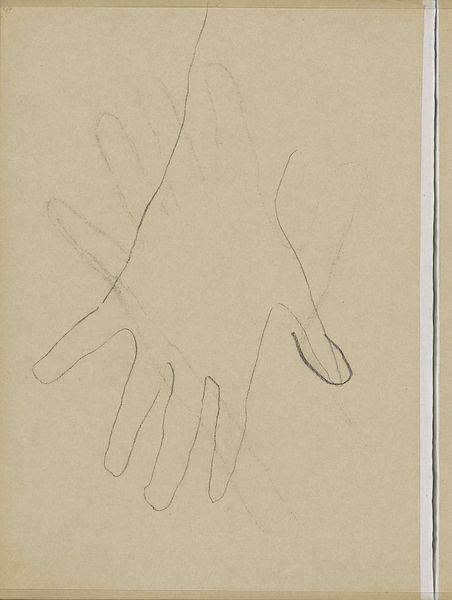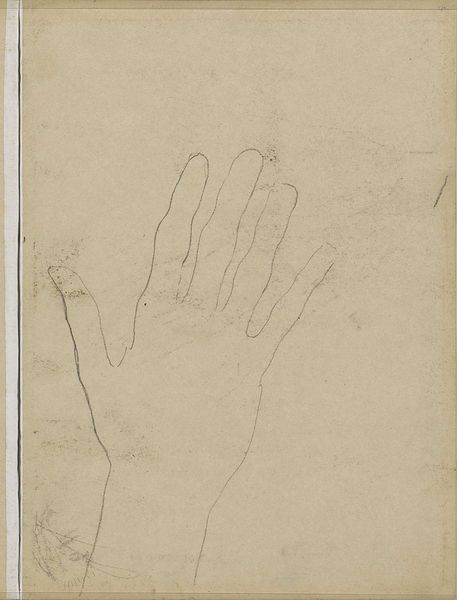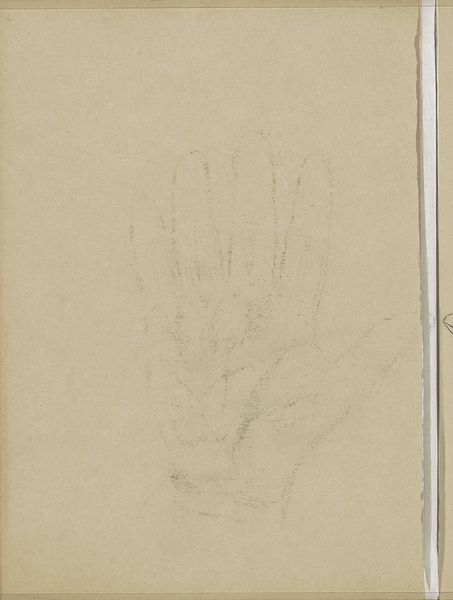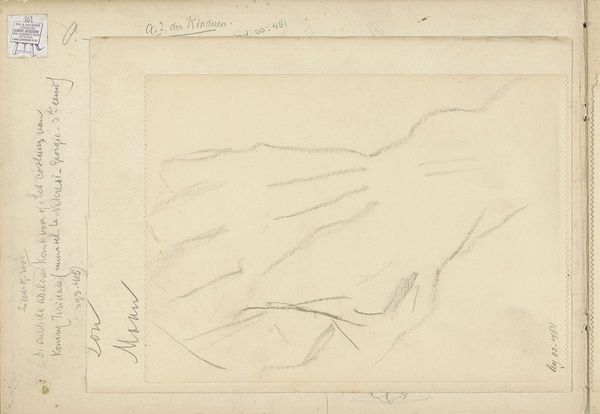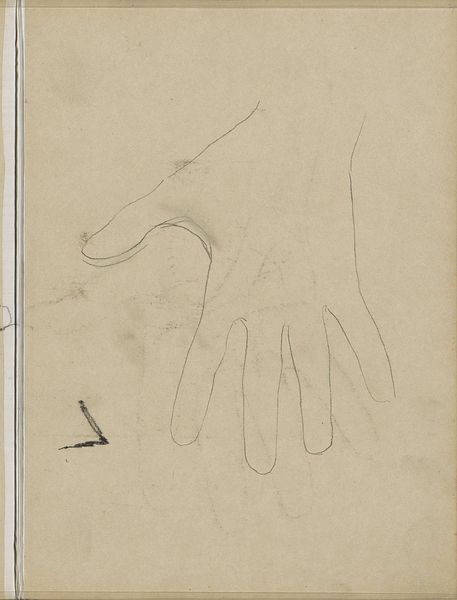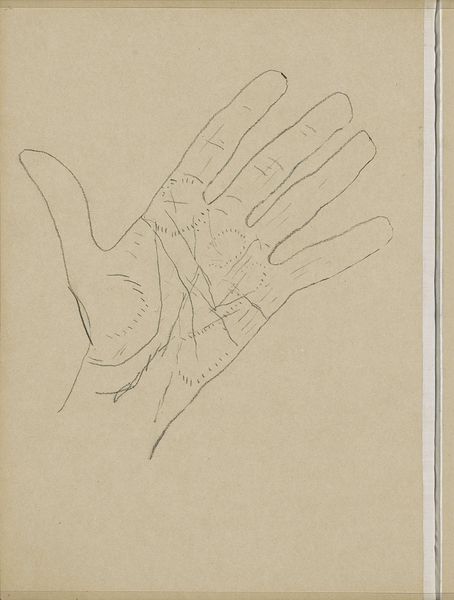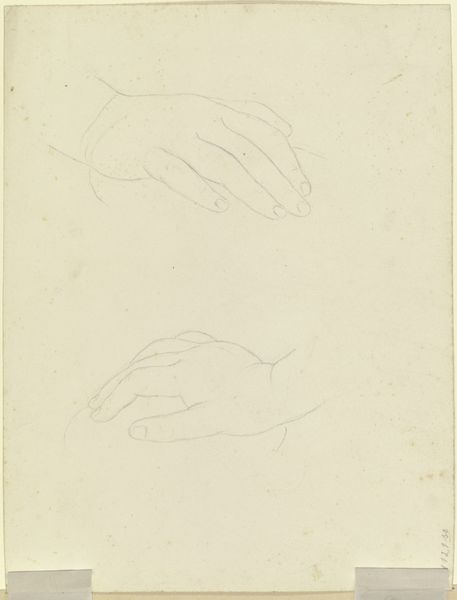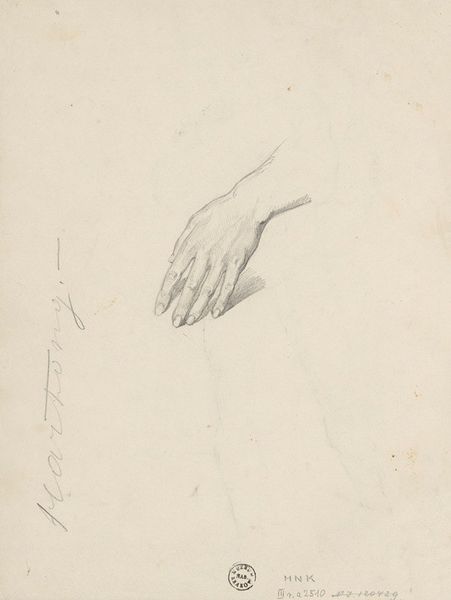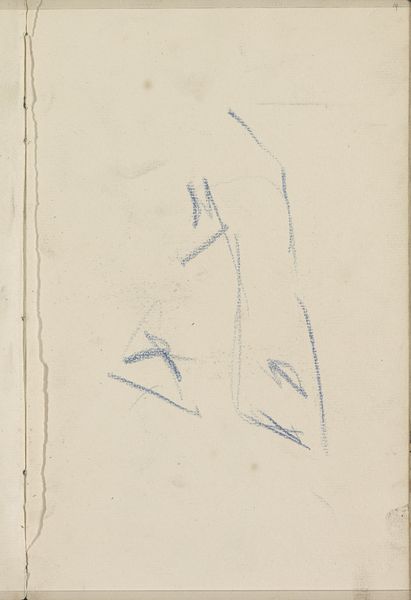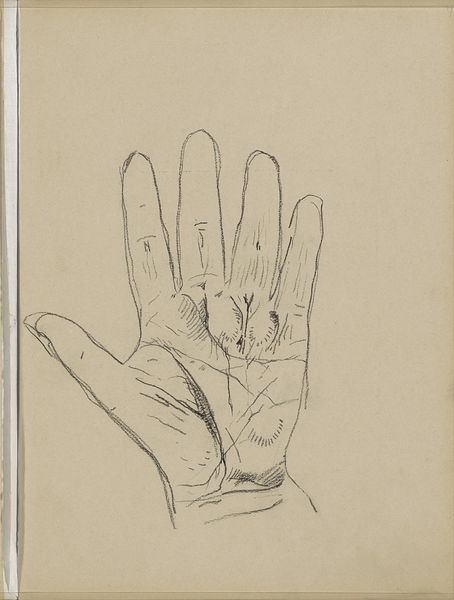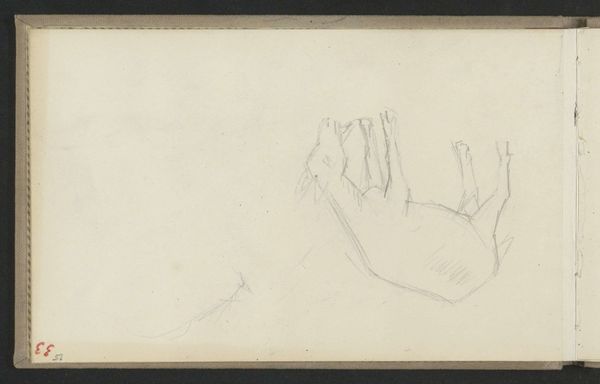
drawing, dry-media, pencil
#
portrait
#
photo of handprinted image
#
drawing
#
aged paper
#
toned paper
#
light pencil work
#
homemade paper
#
ink paper printed
#
hand drawn type
#
form
#
dry-media
#
personal sketchbook
#
pencil
#
line
#
sketchbook drawing
#
sketchbook art
Copyright: Rijks Museum: Open Domain
Editor: Here we have Willem Witsen's "Abklatsch van de krijttekening op pagina 42," which translates to "rubbing of the chalk drawing on page 42," created sometime between 1874 and 1923. It’s a faint pencil drawing, a hand, really ghostly on aged paper. I am struck by the delicate impermanence. What do you see in this piece? Curator: Indeed, the ephemeral nature draws the eye. I see more than just a hand; I see a record, an impression. "Abklatsch" itself carries weight. It's not just a copy but also suggests something revealed through contact. A trace. What emotions does a hand evoke, and how does the nature of the drawing play on them? Editor: It feels like a connection, a literal grasping. And because it’s so faint, like a memory fading. Maybe Witsen wanted to capture something fleeting? Curator: Precisely. Hands are loaded symbols. Think of their roles in benediction, creation, supplication. Consider the cultural context – late 19th/early 20th century. A period grappling with industrialization, anxieties about the loss of individuality... does that lens influence your reading of a solitary hand, preserved this way? Is it asserting its individual being, seeking connection despite change? Editor: That makes me think about how personal this seems, taken from a sketchbook. The gesture is intimate rather than performative, even with its ghost-like form. It does reflect on its time because the human element fades in prominence with industrial growth. Curator: An intriguing reading. Visual symbols accrue layers of meaning across time. Each interaction, from the artist to us, reshapes their narrative. Recognizing these layers enriches our appreciation. Editor: Absolutely. It is not just an exercise of replicating but instead echoes personal and historical impermanence. Thank you. I find that fascinating.
Comments
No comments
Be the first to comment and join the conversation on the ultimate creative platform.
